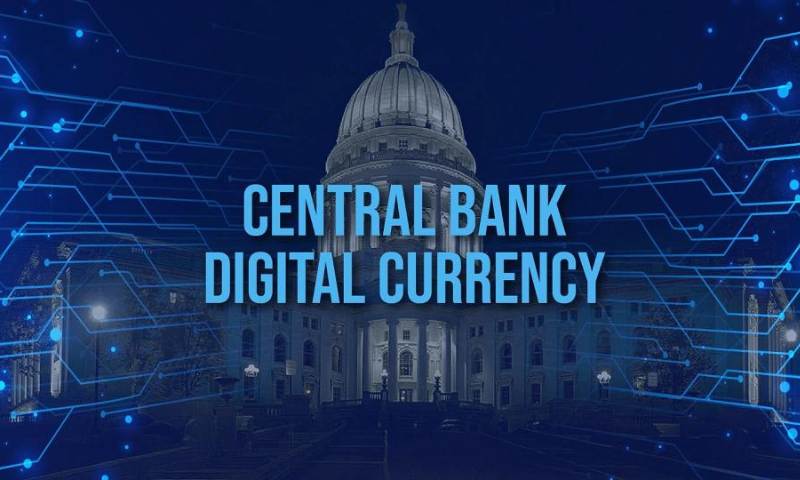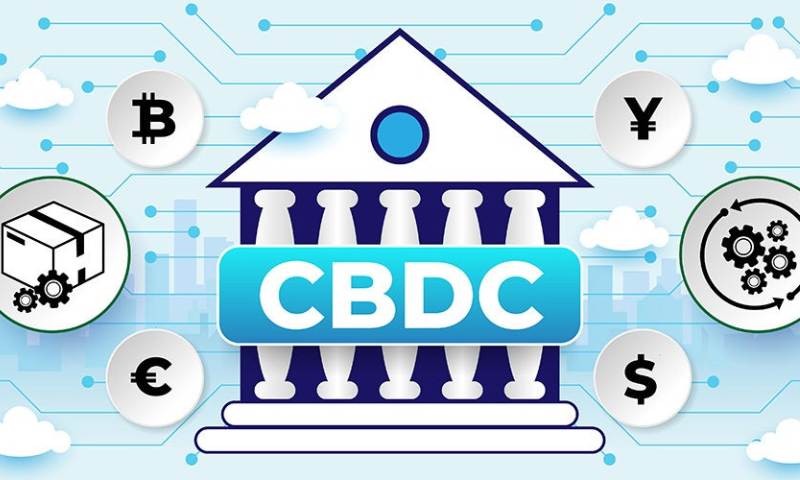Countries launching CBDC is not just a trend; it’s a full-blown race. Each nation wants a slice of the digital currency pie, and they’re moving fast. My expertise leads me to say this: we’re on the brink of a financial revolution. Now, not later, is the time to watch as some step into the light while others lag. Who’s in the lead, and who’s just leaving the starting blocks? In our global overview, we spotlight national moves that could shift power in money. Sit tight. Let’s dive deep into the digital money shift together. Trust me, you’ll want to keep up.
The Current Landscape of CBDC Implementation
Overview of CBDC development globally
All over the world, central banks are racing to make their own digital money. It’s like a big game, but not just for fun—this could change how we all buy things and save money. Many countries are testing their own e-money, and they call it a central bank digital currency or CBDC for short.
These digital bucks work a lot like the money in your piggy bank, but they live on computers. The big bosses at banks are super busy figuring out CBDCs. They want to be really careful with digital money. They must think of smart ways to keep your e-wallet safe and make sure no one takes what’s not theirs.
When a country has its own CBDC, it’s like having a superpower. It can make buying and sharing stuff quicker, even if the person you are dealing with is on the other side of the world! It’s like sending an instant message, but with money. This is not like pretend money in video games. CBDC is real, and you can buy real things with it.
Countries want CBDCs to work well with apps on your phone too. This way, when you want to pay for your new toy or ice cream, you tap a few times, and voila! Paid! It’s that easy!
Spotlight on national digital currency initiatives
Let’s talk about places making their own digital money. China is way ahead with their digital yuan. It’s already out there for some people. Then there’s the digital euro project. Europe is working hard to mix all their money styles into one that you can use on your computer or phone. And more countries are joining this game every day.
The Bahamas has this neat thing called the Sand Dollar. It’s like a special money they made for all their islands. And India is testing an e-rupee—you know, for buying stuff on the web without hassle.
Over in Sweden, they’re trying out this thing called the e-krona. Sweden’s very good at making tech easy for everyone, and they want money to be easy too. Even the Bank of England is thinking about an e-pound. Imagine having British money, but it’s all in your phone!
In the United States, they’re looking into a digital dollar. Not for keeps yet, just talking and testing. They take big decisions like this slowly because digital dollars need a big thumbs-up from lots of important people first.
For any of these cool e-money projects to work, everyone needs to agree on the rules of the game. And since it’s real money, not game tokens, those rules have to be super clear and super fair too.
Think about it: No need for coins jingling in your pocket or worrying if your piggy bank breaks. But with these new types sometimes come big questions like, “Is my e-money safe?” or “Can someone see what I buy?”
That’s why I’m here, talking about money in a way we all get. So when the day comes, you’re ready for this big, new digital money world! And it’s closer than you might think.

Key Players in the CBDC Arena
The progress of China’s digital yuan and digital euro project
Big things are happening in China and Europe right now. They’re racing ahead with their own official digital currencies. Let’s get into it.
China’s digital yuan is a game-changer. China’s central bank started testing it in cities. They’re serious about making it work. People there are already using it to buy stuff and pay bills. It could change how we all use money in the future. No more worries about having cash in your wallet or waiting days for a bank transfer.
The digital euro project is hot on its heels. The European Central Bank is checking out how a digital euro could work. They want to know it’s safe and easy for everyone to use. It’s not just about cutting-edge tech, it’s about making sure it helps people and doesn’t mess up the regular money system.
Exploring the Bank of England e-pound and India’s digital rupee trial
Now, moving on to the UK. The Bank of England is curious about an e-pound. Imagine, a digital version of those crispy banknotes! They’re thinking hard about what it means for your day-to-day shopping and the big picture, like banks and savings. They’re still figuring it out, so no e-pounds just yet.
India’s not waiting around. They’ve kicked off trials for a digital rupee. It’s making waves because it’s not just about new tech. It’s about giving everyone a fair shot at banking, no matter where they are. Imagine not needing a bank account to keep your money safe. That’s the dream, right?
These countries are pushing full steam ahead. Each of them knows how these next-gen digital currencies can shake up the way we do money. They want to be ready, and they want us ready, for this huge leap into digital bucks that live in our phones and gadgets. They’re working hard to make sure it’s all smooth sailing when it comes time to say goodbye to old-school cash.
It’s not just about convenience. It’s about sparking new ideas in financial technology advancements. They know it’s a big deal and are making sure they do it right so we can all trust these new forms of money.
We’re talking about a world where it’s not just “how much” but “how” we use our dough that’s changing. And let’s face it, that’s super exciting! These guys are the trendsetters, setting the pace for what’s coming in our wallets. Stay tuned, because this race for digital currency domination is just heating up.

Technical and Regulatory Considerations
Developing a robust digital currency legal framework
Before a country can launch a central bank digital currency, or CBDC, they must create solid legal rules. This means making sure the new digital money fits well with current laws. It also means thinking about how to protect users’ money and data. Countries are working hard on laws that support the safe growth of CBDCs. For example, they want to prevent crimes like money laundering.
Each country faces unique challenges in this area. Places with advanced tech might move faster than others. But in every case, creating laws that make sense is key. Such a setup will guide the release of CBDCs like the digital dollar, e-pound, and others. This ensures that the new money works safely and fairly for all.
Assessing blockchain technology and secure digital transactions in CBDCs
For CBDC to work, the tech behind it must be top-notch. Blockchain is a leading choice for many. I’ll tell you why. First, blockchain records transactions in a way that is hard to change or break into. This helps stop fraud. Second, blockchain makes it possible to track every transaction. This is good for both users and the banks.
Central banks are testing this tech in pilot programs. They want to figure out the best ways to use it for their own digital currencies. China’s digital yuan and Sweden’s e-krona are two examples of this testing stage. They’re learning how to make digital money that is both safe and easy to use.
In short, countries are in a race to find the best tech and legal setups for their digital money. This could change the way we all use money. It’s an exciting time to see how these new forms of currency will take shape.

The Future of Money and Policy Implications
CBDCs’ impact on monetary policy and the banking system
Imagine money that moves as fast as texts. That’s the idea behind CBDCs. These digital bucks, made by central banks, are a big deal right now. Why? They can change how we use money. Banks and whole countries are paying attention.
What’s a CBDC, you may ask? It’s like the money in your wallet but digital. Think of video game coins that you can use in real life. Central banks control it, not game makers. This helps keep things safe and official.
Now, CBDC impact on banking – this is big. Banks need to stay in the game. They have to figure out new ways to work with digital cash. Just like phones changed how we talk, CBDCs could change money talks. Banks and money could move faster and smarter.
But it’s not just speed. It’s about control too. With CBDCs, central banks can manage money better. They can help economies run smooth, even in tough times. When banks lend digital cash, it can move quick to where it’s needed most.
Privacy concerns and interoperability of CBDCs in cross-border payments
Let’s talk privacy. We all want our money info to stay safe, right? But with digital stuff, it gets tricky. So, when we talk about CBDCs, we got to talk privacy.
When you buy with digital cash, banks can see it. That’s a bit scary. But hey, banks say they’re working hard to keep our secrets, well, secret. They don’t want folks peeking at what we buy or where our money goes. So, they use tech magic – like codes only we know – to lock our info tight.
Now, using CBDCs for buying stuff from other places – that’s a cool idea. It’s called cross-border payments. This means if you’re here and you buy from over there, it should be easy.
Countries need to work together for this. Their CBDCs have to talk the same money language. That’s interoperability. Just like how phones from different places can still call each other.
So, let’s say you use digital dollars here but need euros over there. If the systems match up, you can zap money across the world. No waiting, no big fees. It’s all about making buying from faraway places as easy as from next door.
Why does this matter? It’s all about making life easier and better. Money that’s quick and safe can help us all. So, CBDCs aren’t just a cool idea. They’re about giving us more power over our cash and how we live. We’re on the way to a cashless world, and that’s super exciting!
CBDCs are making waves. But it’s not just a race for cool money. It’s about building a way for money to help us all live better. And with everyone’s eyes on this, the future of money sure looks bright!
We’ve explored the world of digital money, from CBDCs’ growth worldwide to national efforts shaping our cashless future. Big players like China and the EU are racing forward with their digital yuan and euro, while others like the UK and India are catching up. We can’t forget the tech and rules that make these currencies safe and fair. Plus, we’ve unpacked how CBDCs could change banks and our privacy across borders. Remember, as we move to digital pockets, staying smart on these changes matters—for our money and our world. Keep an eye out; our cash is going digital, and it’s a game-changer.
Q&A :
What is a Central Bank Digital Currency (CBDC) and which countries are actively launching them?
A Central Bank Digital Currency (CBDC) is a digital form of a country’s national currency that is issued and regulated by the nation’s central bank. It provides a new method for conducting financial transactions and aims to modernize the financial system. Countries like China with their Digital Yuan and the Bahamas with the Sand Dollar are among the early adopters actively launching CBDCs. Other countries like Sweden are also running pilot projects for their own digital currency, the e-krona.
How could CBDCs change the current financial system in countries that adopt them?
CBDCs have the potential to greatly impact the financial system by providing an official digital currency that reduces dependency on physical cash, enhances the efficiency of payment systems, and streamlines cross-border transactions. Additionally, they could improve financial inclusion by providing underserved communities with more accessible monetary services. CBDCs might also impact monetary policy implementation and the banking sector’s role in the economy.
Are there any risks associated with countries implementing their own CBDC?
Implementation of CBDCs does come with several risks, such as concerns regarding privacy, cybersecurity threats, and the potential for a shift in the banking industry. Central banks need to ensure the security and resilience of the CBDC infrastructure to protect against cyber-attacks and maintain user trust. There’s also a risk of disintermediation of banks if consumers opt to hold digital currency accounts directly with central banks.
Which country was first to launch a Central Bank Digital Currency?
The Bahamas was among the first countries to fully deploy a CBDC, known as the Sand Dollar, which was implemented in October 2020. The Sand Dollar aims to promote more inclusive access to regulated payments and other financial services for the island’s residents.
How does a CBDC differ from cryptocurrencies like Bitcoin or Ethereum?
A CBDC differs substantially from cryptocurrencies such as Bitcoin and Ethereum in terms of regulation and stability. CBDCs are issued and governed by a country’s central bank and are pegged to the value of that country’s fiat currency, providing stability. Cryptocurrencies, on the other hand, operate on decentralized networks and their value can be highly volatile. CBDCs are also designed to be a legal tender with the backing of the government, unlike most cryptocurrencies.



